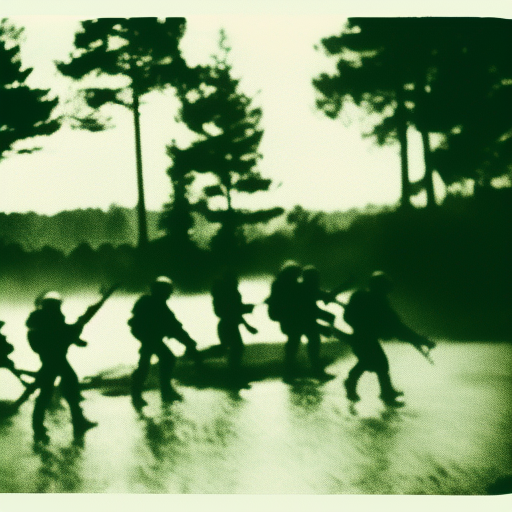Battle of the Slaak: A Naval Clash during the First Anglo-Dutch War
The Battle of the Slaak was a significant naval engagement that took place on 12 September 1631 during the First Anglo-Dutch War. The battle occurred near the mouth of the Slaak estuary, off the coast of the Netherlands. It was fought between the Dutch Republic and the Kingdom of England, and resulted in a decisive Dutch victory.
Background:
The First Anglo-Dutch War was a conflict between the Dutch Republic and England that lasted from 1652 to 1654. The war was primarily fought at sea, as both nations sought to establish dominance over maritime trade routes and colonial territories. The Battle of the Slaak was one of the early engagements of the war.
The Dutch Fleet:
The Dutch fleet, commanded by Vice Admiral Philips van Dorp, consisted of 26 warships, including several powerful ships of the line. The Dutch navy was known for its skilled sailors and advanced naval tactics. They were determined to protect their trade routes and maintain control over the seas.
The English Fleet:
The English fleet, under the command of Vice Admiral Sir John Penington, consisted of 18 warships. The English navy was also experienced and well-equipped, but they faced challenges due to political and logistical issues. The English ships were not as well-maintained as their Dutch counterparts, and their crews were often poorly paid and discontented.
The Battle:
The battle began when the English fleet attempted to intercept a Dutch convoy returning from the Baltic Sea. The Dutch convoy was heavily laden with valuable cargo, making it a tempting target for the English. However, the Dutch fleet, alerted to the English presence, swiftly moved to protect the convoy.
The Dutch ships formed a defensive line, with their larger ships positioned at the front. This formation allowed them to concentrate their firepower and protect the vulnerable merchant ships. The English, lacking a clear strategy, launched a disorganized attack. Their ships were unable to break through the Dutch line, and they suffered heavy casualties.
Dutch Victory:
The battle ended in a decisive Dutch victory. The Dutch fleet successfully defended the convoy and inflicted significant damage on the English ships. Several English vessels were captured or sunk, and many others were forced to retreat. The Dutch suffered minimal losses, further cementing their reputation as a formidable naval power.
Aftermath:
The Battle of the Slaak had important consequences for both sides. The Dutch Republic maintained control over its trade routes, ensuring the continued prosperity of its economy. The English, on the other hand, faced setbacks in their efforts to challenge Dutch dominance at sea.
The battle also highlighted the need for the English navy to undergo significant reforms. The English government recognized the importance of a strong and well-maintained fleet, leading to improvements in shipbuilding, crew training, and naval strategy. These reforms would play a crucial role in later conflicts, such as the Second and Third Anglo-Dutch Wars.
In conclusion, the Battle of the Slaak was a significant naval engagement during the First Anglo-Dutch War. The Dutch Republic’s decisive victory demonstrated their naval superiority and secured their control over trade routes. The battle also highlighted the need for reforms within the English navy. Overall, the Battle of the Slaak had far-reaching implications for the balance of power at sea during this period.












